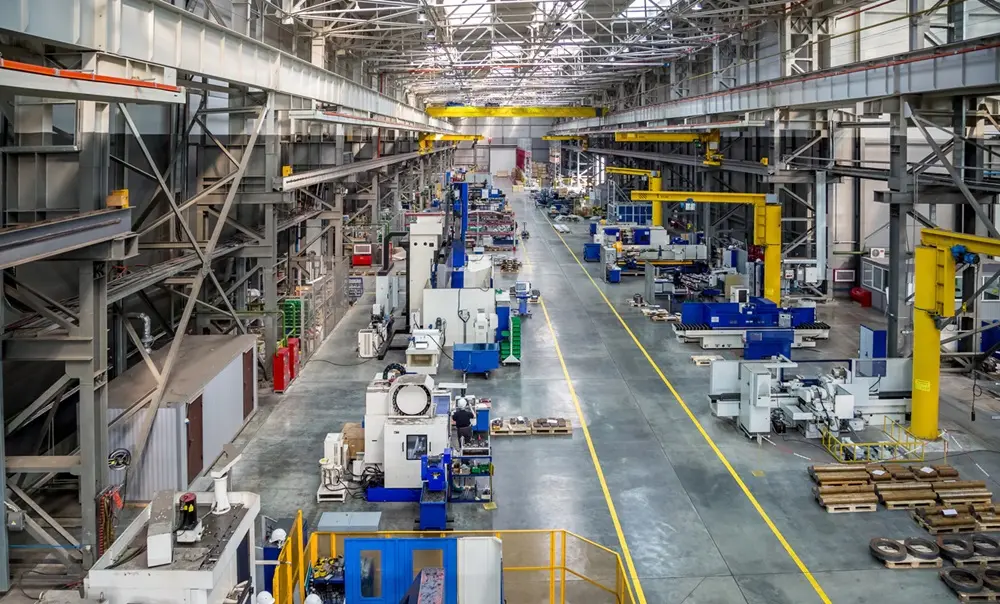Maintaining a sterile environment is not just a best practice; it’s a fundamental requirement in many manufacturing sectors. Industries like pharmaceuticals, biotechnology, and medical device production depend on absolute sterility to ensure product safety and efficacy. A single contamination event can lead to catastrophic consequences, which makes it important to implement stringent standards and invest in essentials that matter.
In this article, we’ll explore six essential components that form the backbone of any successful sterile manufacturing facility. Let’s dive into them!
Implementing a Robust HVAC System
A state-of-the-art Heating, Ventilation, and Air Conditioning (HVAC) system is the heart of a sterile facility. It does more than just control temperature and humidity; it is your primary defense against airborne contaminants. These specialized systems use High-Efficiency Particulate Air (HEPA) filters, which are capable of capturing small particles.
An HVAC system creates differential pressure gradients between rooms, ensuring that air flows from cleaner areas to less clean areas, preventing the ingress of contaminants into critical zones. Proper design and regular maintenance are crucial as well. The system must be meticulously calibrated to maintain specific air change rates per hour (ACPH), ensuring the rapid removal of any internally generated particles and maintaining the integrity of the controlled environment.
Designing a Strategic Facility Layout
The physical layout of your sterile manufacturing facility plays a critical role in preventing contamination. A well-designed floor plan facilitates a logical flow of personnel, materials, and waste, minimizing the risk of cross-contamination. This typically involves creating distinct zones with increasing levels of cleanliness, often classified according to ISO standards (e.g., ISO 5 through ISO 8).
In particular, personnel and material airlocks act as transition buffers between these zones, allowing for gowning procedures and decontamination steps before entry into more critical areas. The layout should also consider the placement of equipment to allow for easy cleaning and maintenance access, eliminating hard-to-reach spots where contaminants could accumulate over time. Smooth, non-porous, and chemical-resistant surfaces for floors, walls, and ceilings are also essential to facilitate effective sanitization.
Establishing Comprehensive Gowning Protocols
Even the most advanced facility is vulnerable to contamination brought in by personnel. That’s why establishing and strictly enforcing comprehensive gowning protocols is non-negotiable. These procedures are designed to cover street clothes and minimize the shedding of particles and microorganisms from operators.
The required gowning level depends on the cleanliness classification of the area being entered. This can range from simple lab coats and shoe covers in less critical zones to full-body sterile suits, hoods, goggles, gloves, and boots in aseptic processing areas. Training is paramount. Every employee, visitor, and contractor entering controlled environments must be thoroughly trained on the correct gowning and de-gowning techniques to ensure protocols are followed without exception.
Utilizing Industrial-Grade Garbage Cans
Waste management in a sterile environment requires more than just standard disposal methods. Contaminated materials, used personal protective equipment (PPE), and production by-products must be handled and removed in a way that prevents them from compromising the sterile core. This is where investing in the right containment solutions becomes vital.
Facilities must utilize heavy duty garbage cans specifically designed for industrial and cleanroom use. These containers are often made from non-porous materials like high-grade plastic, which can be easily cleaned and sanitized. Many are designed with foot-pedal operation to minimize hand contact and feature tight-sealing lids to contain waste effectively. Proper segregation and clear labeling of waste streams are also critical components of a compliant waste disposal program.
Maintaining Rigorous Environmental Monitoring
You cannot control what you do not measure. A continuous environmental monitoring program is essential to verify that your facility’s controlled environments are consistently meeting the required specifications. This involves a systematic approach to sampling and testing the air and surfaces for microbial and particulate contamination. Routine monitoring includes viable air sampling, which collects airborne microorganisms, and surface sampling using contact plates or swabs to test equipment, walls, and floors.
Furthermore, non-viable particle counters are also used to continuously monitor the concentration of airborne particles in real-time. The data collected from these activities provides a clear picture of the state of control within the facility, allowing for immediate corrective action if any deviations or trends toward contamination are detected. This proactive approach is fundamental to ensuring ongoing compliance and product safety.
Qualifying Critical Manufacturing Equipment
The integrity of a sterile environment extends to the machinery operating within it. Simply installing a piece of equipment is not enough; you must formally prove that it is suitable for its intended purpose through a rigorous process known as qualification and validation. This essential step provides documented evidence that your manufacturing equipment—from autoclaves and bioreactors to filling lines and isolators—will not compromise product sterility and will perform consistently.
The process typically involves three key phases: Installation Qualification, which confirms the equipment is installed correctly according to manufacturer specifications; Operational Qualification, which tests that the equipment operates correctly throughout its defined ranges; and Performance Qualification, which demonstrates that the equipment consistently produces a quality product under real-world conditions. This science-based approach ensures that every system functions precisely as intended.
Creating and maintaining a sterile manufacturing facility is a complex and demanding endeavor. It requires a holistic approach that integrates advanced engineering controls, strategic design, strict operational protocols, and continuous verification. By focusing on these six essential pillars, you can build a robust foundation for producing safe, high-quality products while meeting the highest industry and regulatory standards.






